Adventure Travel · Africa · Asia · Caribbean · Central America · Ecuador · Grenada · Indonesia · Japan · Leisure Travel · Mozambique · Philippines · Regions · Saint Vincent and the Grenadines · South Africa · South America · Speciality Travel · Sri Lanka
The 10 best snorkeling spots in the world
Slipping into the water is arguably the best way to appreciate the worlds vibrant array of marine life. Weve listed our top ten snorkeling spots around the world from uninhabited islands and rugged coastlines to shallow lagoons.
Galapagos Islands
The volcanic archipelagos of the Galapagos Islands host truly remarkable opportunities to spot wildlife underwater as well as on land. Marine life here is fearless: as you snorkel, youre likely to be investigated by a curious green turtle or sea lion pup. There are numerous bays seemingly designed for snorkeling, from the sheltered Tagus Cove on Isabela Island to the dramatic Pinnacle Rock Cove, its titular rock tilting out to sea.
 Drawing scientists from all over the world, the list of ocean life here is long. Nowhere else in the world can you snorkel with marine iguanas, Galapagos penguins, nurse sharks or up to five species of ray. And thats just in a morning.
Komodo Island, Indonesia
Snorkeling around Komodo Island is becoming more appealing than spotting the Komodo Dragons that live on the land. A protected national park, the coast is untouched, and lined with tangled jungle and silver-sand beaches. Staying on board a Phinisi schooner, a lavishly traditional sailboat, you can cruise past the intriguing caves and beaches, searching for one of the hidden lagoons. In the shallow reefs, turtles calmly glide over the gently swaying coral while clown fish dart through the anemones.
Drawing scientists from all over the world, the list of ocean life here is long. Nowhere else in the world can you snorkel with marine iguanas, Galapagos penguins, nurse sharks or up to five species of ray. And thats just in a morning.
Komodo Island, Indonesia
Snorkeling around Komodo Island is becoming more appealing than spotting the Komodo Dragons that live on the land. A protected national park, the coast is untouched, and lined with tangled jungle and silver-sand beaches. Staying on board a Phinisi schooner, a lavishly traditional sailboat, you can cruise past the intriguing caves and beaches, searching for one of the hidden lagoons. In the shallow reefs, turtles calmly glide over the gently swaying coral while clown fish dart through the anemones.
 A little deeper, it’s possible to spot manta rays ‘flying ‘ through the ocean, sifting plankton and small fish. Theyll glide around, waiting for a ball of plankton before suddenly speeding up and somersaulting towards their prey, their huge mouth wide open.
Kabira Bay, Ishigaki, Japan
Kabira Bay nestles into the side of the island of Ishigaki, where Mount Omoto looms in the distance. A relatively shallow wading beach, lined with glass-bottom boats prepared for an influx of day-trippers, it may not seem ideal. But, offshore, the sites are remarkable. Take a boat out to one of the off-shore reefs. Just past the coral walls the sea floor drops suddenly, and swimming those few strokes over the edge of the drop-off is exhilarating.
A little deeper, it’s possible to spot manta rays ‘flying ‘ through the ocean, sifting plankton and small fish. Theyll glide around, waiting for a ball of plankton before suddenly speeding up and somersaulting towards their prey, their huge mouth wide open.
Kabira Bay, Ishigaki, Japan
Kabira Bay nestles into the side of the island of Ishigaki, where Mount Omoto looms in the distance. A relatively shallow wading beach, lined with glass-bottom boats prepared for an influx of day-trippers, it may not seem ideal. But, offshore, the sites are remarkable. Take a boat out to one of the off-shore reefs. Just past the coral walls the sea floor drops suddenly, and swimming those few strokes over the edge of the drop-off is exhilarating.
 The conference of two different marine environments has resulted in Kabiras combination of shallow dwelling fish (like the Irabucha, Japans most popular fish for sushi) and deeper dwelling manta rays. Blowfish are also common here, immediately transforming themselves into spiky balls when disturbed. The bay is suited to more experienced snorkelers, so its best to have an accompanying guide.
The Aliwal Shoal, South Africa
A fossilised sand dune turned reef, the Aliwal Shoal sits off the coast of Umkomaas, south of Durban. The reef is a rugged mass of caves, ledges and shipwrecks, named after the ship Aliwal, which ran aground on it in 1849. Forget cage diving, here you can snorkel with hundreds of grey nurse sharks known locally as raggies that cruise the shoal. The speckled potato bass and neon moray eels hide in the coral while humpback whales occupy the deeper water; you can hear their song from the shallower snorkel sites.
The conference of two different marine environments has resulted in Kabiras combination of shallow dwelling fish (like the Irabucha, Japans most popular fish for sushi) and deeper dwelling manta rays. Blowfish are also common here, immediately transforming themselves into spiky balls when disturbed. The bay is suited to more experienced snorkelers, so its best to have an accompanying guide.
The Aliwal Shoal, South Africa
A fossilised sand dune turned reef, the Aliwal Shoal sits off the coast of Umkomaas, south of Durban. The reef is a rugged mass of caves, ledges and shipwrecks, named after the ship Aliwal, which ran aground on it in 1849. Forget cage diving, here you can snorkel with hundreds of grey nurse sharks known locally as raggies that cruise the shoal. The speckled potato bass and neon moray eels hide in the coral while humpback whales occupy the deeper water; you can hear their song from the shallower snorkel sites.
 An option for the more adventurous, its wise to hire a guide to negotiate the shoals network of rocks. Youll need diving equipment to explore part of the reef, but with a range of well-reputed dive schools, its easy to arrange.
Hol Chan Marine Reserve, Belize
Located southeast of San Pedro Town, Hol Chan Marine Reserve lies off the coast of Ambergris Caye. Meaning Little Channel in the indigenous Maya language, the reserve is a natural break in the sea floor. Made up of four distinct habitats, its possible to explore very different environments in one trip.
An option for the more adventurous, its wise to hire a guide to negotiate the shoals network of rocks. Youll need diving equipment to explore part of the reef, but with a range of well-reputed dive schools, its easy to arrange.
Hol Chan Marine Reserve, Belize
Located southeast of San Pedro Town, Hol Chan Marine Reserve lies off the coast of Ambergris Caye. Meaning Little Channel in the indigenous Maya language, the reserve is a natural break in the sea floor. Made up of four distinct habitats, its possible to explore very different environments in one trip.
 The roots of the mangroves that line the shore act as a nursery for juvenile fish as well as wiggling anemones and brittle stars, the spiny relatives of starfish. The reef is one of the largest in the world, with large elkhorn coral providing the peak environment to support a healthy lobster population. Further into the ocean is shark ray alley, a gathering point for nurse sharks and stingrays.
Underwater sculpture park, Grenada
The coral of Molinere Bay, on the southwestern tip of Grenada, has suffered from environmental damage, weakening the delicate coral structures. In an innovative attempt to regenerate the area, British sculptor Jason de Caires Taylor has worked with the local community to create an underwater sculpture park.
The roots of the mangroves that line the shore act as a nursery for juvenile fish as well as wiggling anemones and brittle stars, the spiny relatives of starfish. The reef is one of the largest in the world, with large elkhorn coral providing the peak environment to support a healthy lobster population. Further into the ocean is shark ray alley, a gathering point for nurse sharks and stingrays.
Underwater sculpture park, Grenada
The coral of Molinere Bay, on the southwestern tip of Grenada, has suffered from environmental damage, weakening the delicate coral structures. In an innovative attempt to regenerate the area, British sculptor Jason de Caires Taylor has worked with the local community to create an underwater sculpture park.
 A ten-minute boat ride from the coast, you can take a guided snorkeling tour to the park, but the thrill of discovering each sculpture yourself is part of the experience. The concrete-formed figures with faces cast from local students all tell a story based on local folk tales. Swimming past them, you can see how the coral is gradually taking over in bright pinks and yellows. An eco-friendly option, snorkeling around the sculptures relieves the pressure on the fragile natural reefs left in the area as swimmers can disturb recovering coral.
El Nido, Philippines
The coral triangle, a roughly triangular area of coral in the Pacific ocean, has been nicknamed the Amazon of the seas. El Nido is located at its heart, making it home to one of the most biodiverse marine eco systems in the world. Consisting of a scattering of islands and islets, El Nido is framed with limestone cliffs and jungle. Protected against large scale fishing, the coral is impeccably healthy at the last count over 6000 species of coral were recorded.
A ten-minute boat ride from the coast, you can take a guided snorkeling tour to the park, but the thrill of discovering each sculpture yourself is part of the experience. The concrete-formed figures with faces cast from local students all tell a story based on local folk tales. Swimming past them, you can see how the coral is gradually taking over in bright pinks and yellows. An eco-friendly option, snorkeling around the sculptures relieves the pressure on the fragile natural reefs left in the area as swimmers can disturb recovering coral.
El Nido, Philippines
The coral triangle, a roughly triangular area of coral in the Pacific ocean, has been nicknamed the Amazon of the seas. El Nido is located at its heart, making it home to one of the most biodiverse marine eco systems in the world. Consisting of a scattering of islands and islets, El Nido is framed with limestone cliffs and jungle. Protected against large scale fishing, the coral is impeccably healthy at the last count over 6000 species of coral were recorded.
 You can snorkel right off of your resorts beach or head further afield to one of the uninhabited limestone islands or lagoons. Five species of turtle, whale sharks and a host of vibrant reef fish dart around the coral. Bizarre characters to spot include the electric-blue ribbon eel who seemingly dances in the current.
Pigeon Island Marine National Park, Trincomalee, Sri Lanka
While tourism in Sri Lankas south has boomed, its still possible to find seclusion in the north. From the coastal town of Trincomalee, on the northeast coast of Sri Lanka, Pigeon Island is just in sight. A short speedboat ride will take you to this tiny, uninhabited island. Its coral-edged bay is sheltered towards the mainland so snorkeling is a gentle experience for beginners and children.
You can snorkel right off of your resorts beach or head further afield to one of the uninhabited limestone islands or lagoons. Five species of turtle, whale sharks and a host of vibrant reef fish dart around the coral. Bizarre characters to spot include the electric-blue ribbon eel who seemingly dances in the current.
Pigeon Island Marine National Park, Trincomalee, Sri Lanka
While tourism in Sri Lankas south has boomed, its still possible to find seclusion in the north. From the coastal town of Trincomalee, on the northeast coast of Sri Lanka, Pigeon Island is just in sight. A short speedboat ride will take you to this tiny, uninhabited island. Its coral-edged bay is sheltered towards the mainland so snorkeling is a gentle experience for beginners and children.
 With the coral starting right from the beach, theres no need for a guide. Take lunch and you can enjoy a peaceful afternoon. A family of green turtles live on the reef, and hawksbill and olive ridley turtles have been sited regularly. Blacktip reef sharks can be seen in the shadows and a host of neon fish dart through the coral. In summer, its possible to see blue whales thrashing in the deep shelf drop out to sea.
Tobago Cays, St Vincent and the Grenadines
Off the coast of St Vincent and the Grenadines are five uninhabited sandy islands, making up Tobago Cays. A protected area, the islands are completely undisturbed, and covered in lush mangroves and white sand. Known as Grenadines Jewels in the crown, the stylish way to explore is by luxury yacht, anchoring near the snorkel sites.
With the coral starting right from the beach, theres no need for a guide. Take lunch and you can enjoy a peaceful afternoon. A family of green turtles live on the reef, and hawksbill and olive ridley turtles have been sited regularly. Blacktip reef sharks can be seen in the shadows and a host of neon fish dart through the coral. In summer, its possible to see blue whales thrashing in the deep shelf drop out to sea.
Tobago Cays, St Vincent and the Grenadines
Off the coast of St Vincent and the Grenadines are five uninhabited sandy islands, making up Tobago Cays. A protected area, the islands are completely undisturbed, and covered in lush mangroves and white sand. Known as Grenadines Jewels in the crown, the stylish way to explore is by luxury yacht, anchoring near the snorkel sites.
 The islands lie in a shallow lagoon, well protected by a huge horseshoe of coral that creates a refuge for particularly curious green and hawksbill turtles. The shallow water and calm currents means its easy to spot the starfish, some of the largest in the world. If you manage to pull yourself away from the marine life, you might spot white zebra rhino iguanas skulking along the beach.
The Bazaruto Archipelago, Mozambique
Its possible to arrive by helicopter on the sugar-white beaches of the Bazaruto Archipelago, a collection of five sandy islands stretching out from the southern coast of Mozambique. Nicknamed “the Aquarium”, the 3 km (two mile) reef running alongside is teeming with over 100 types of vibrant coral and more than 2,000 species of tropical fish.
The islands lie in a shallow lagoon, well protected by a huge horseshoe of coral that creates a refuge for particularly curious green and hawksbill turtles. The shallow water and calm currents means its easy to spot the starfish, some of the largest in the world. If you manage to pull yourself away from the marine life, you might spot white zebra rhino iguanas skulking along the beach.
The Bazaruto Archipelago, Mozambique
Its possible to arrive by helicopter on the sugar-white beaches of the Bazaruto Archipelago, a collection of five sandy islands stretching out from the southern coast of Mozambique. Nicknamed “the Aquarium”, the 3 km (two mile) reef running alongside is teeming with over 100 types of vibrant coral and more than 2,000 species of tropical fish.
 The most unusual animal to spot is the dugong. Related to the manatee, these ginormous creatures were hunted for their meat and are now an endangered species. With the shallow water a temperate 20 C (68 F), a gentle current and crystal-clear visibility, this is a comfortable snorkeling spot. Even more so if you choose to stay in one of the deluxe hotels on the archipelago.
Craig Burkinshaw is Founder of Audley Travel.
If you would like to be a guest blogger on A Luxury Travel Blog in order to raise your profile, please contact us.
The most unusual animal to spot is the dugong. Related to the manatee, these ginormous creatures were hunted for their meat and are now an endangered species. With the shallow water a temperate 20 C (68 F), a gentle current and crystal-clear visibility, this is a comfortable snorkeling spot. Even more so if you choose to stay in one of the deluxe hotels on the archipelago.
Craig Burkinshaw is Founder of Audley Travel.
If you would like to be a guest blogger on A Luxury Travel Blog in order to raise your profile, please contact us.
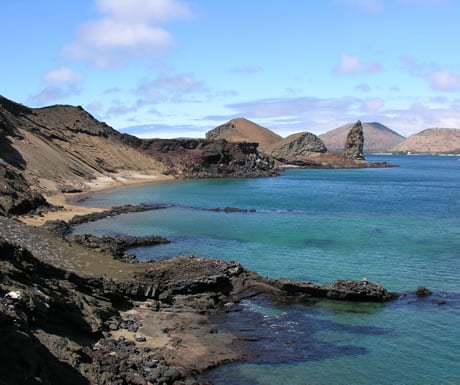 Drawing scientists from all over the world, the list of ocean life here is long. Nowhere else in the world can you snorkel with marine iguanas, Galapagos penguins, nurse sharks or up to five species of ray. And thats just in a morning.
Komodo Island, Indonesia
Snorkeling around Komodo Island is becoming more appealing than spotting the Komodo Dragons that live on the land. A protected national park, the coast is untouched, and lined with tangled jungle and silver-sand beaches. Staying on board a Phinisi schooner, a lavishly traditional sailboat, you can cruise past the intriguing caves and beaches, searching for one of the hidden lagoons. In the shallow reefs, turtles calmly glide over the gently swaying coral while clown fish dart through the anemones.
Drawing scientists from all over the world, the list of ocean life here is long. Nowhere else in the world can you snorkel with marine iguanas, Galapagos penguins, nurse sharks or up to five species of ray. And thats just in a morning.
Komodo Island, Indonesia
Snorkeling around Komodo Island is becoming more appealing than spotting the Komodo Dragons that live on the land. A protected national park, the coast is untouched, and lined with tangled jungle and silver-sand beaches. Staying on board a Phinisi schooner, a lavishly traditional sailboat, you can cruise past the intriguing caves and beaches, searching for one of the hidden lagoons. In the shallow reefs, turtles calmly glide over the gently swaying coral while clown fish dart through the anemones.
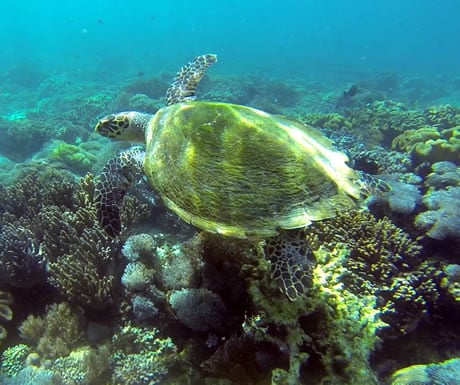 A little deeper, it’s possible to spot manta rays ‘flying ‘ through the ocean, sifting plankton and small fish. Theyll glide around, waiting for a ball of plankton before suddenly speeding up and somersaulting towards their prey, their huge mouth wide open.
Kabira Bay, Ishigaki, Japan
Kabira Bay nestles into the side of the island of Ishigaki, where Mount Omoto looms in the distance. A relatively shallow wading beach, lined with glass-bottom boats prepared for an influx of day-trippers, it may not seem ideal. But, offshore, the sites are remarkable. Take a boat out to one of the off-shore reefs. Just past the coral walls the sea floor drops suddenly, and swimming those few strokes over the edge of the drop-off is exhilarating.
A little deeper, it’s possible to spot manta rays ‘flying ‘ through the ocean, sifting plankton and small fish. Theyll glide around, waiting for a ball of plankton before suddenly speeding up and somersaulting towards their prey, their huge mouth wide open.
Kabira Bay, Ishigaki, Japan
Kabira Bay nestles into the side of the island of Ishigaki, where Mount Omoto looms in the distance. A relatively shallow wading beach, lined with glass-bottom boats prepared for an influx of day-trippers, it may not seem ideal. But, offshore, the sites are remarkable. Take a boat out to one of the off-shore reefs. Just past the coral walls the sea floor drops suddenly, and swimming those few strokes over the edge of the drop-off is exhilarating.
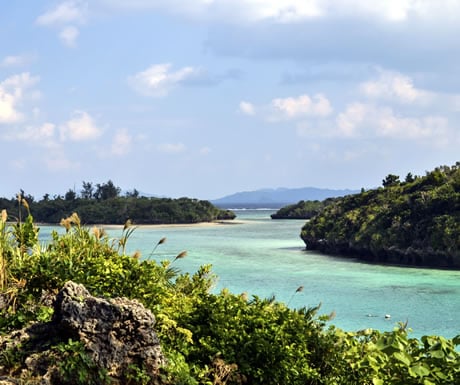 The conference of two different marine environments has resulted in Kabiras combination of shallow dwelling fish (like the Irabucha, Japans most popular fish for sushi) and deeper dwelling manta rays. Blowfish are also common here, immediately transforming themselves into spiky balls when disturbed. The bay is suited to more experienced snorkelers, so its best to have an accompanying guide.
The Aliwal Shoal, South Africa
A fossilised sand dune turned reef, the Aliwal Shoal sits off the coast of Umkomaas, south of Durban. The reef is a rugged mass of caves, ledges and shipwrecks, named after the ship Aliwal, which ran aground on it in 1849. Forget cage diving, here you can snorkel with hundreds of grey nurse sharks known locally as raggies that cruise the shoal. The speckled potato bass and neon moray eels hide in the coral while humpback whales occupy the deeper water; you can hear their song from the shallower snorkel sites.
The conference of two different marine environments has resulted in Kabiras combination of shallow dwelling fish (like the Irabucha, Japans most popular fish for sushi) and deeper dwelling manta rays. Blowfish are also common here, immediately transforming themselves into spiky balls when disturbed. The bay is suited to more experienced snorkelers, so its best to have an accompanying guide.
The Aliwal Shoal, South Africa
A fossilised sand dune turned reef, the Aliwal Shoal sits off the coast of Umkomaas, south of Durban. The reef is a rugged mass of caves, ledges and shipwrecks, named after the ship Aliwal, which ran aground on it in 1849. Forget cage diving, here you can snorkel with hundreds of grey nurse sharks known locally as raggies that cruise the shoal. The speckled potato bass and neon moray eels hide in the coral while humpback whales occupy the deeper water; you can hear their song from the shallower snorkel sites.
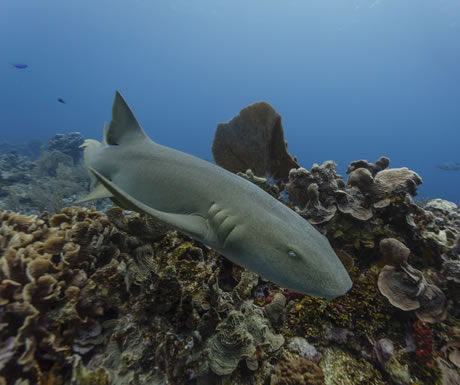 An option for the more adventurous, its wise to hire a guide to negotiate the shoals network of rocks. Youll need diving equipment to explore part of the reef, but with a range of well-reputed dive schools, its easy to arrange.
Hol Chan Marine Reserve, Belize
Located southeast of San Pedro Town, Hol Chan Marine Reserve lies off the coast of Ambergris Caye. Meaning Little Channel in the indigenous Maya language, the reserve is a natural break in the sea floor. Made up of four distinct habitats, its possible to explore very different environments in one trip.
An option for the more adventurous, its wise to hire a guide to negotiate the shoals network of rocks. Youll need diving equipment to explore part of the reef, but with a range of well-reputed dive schools, its easy to arrange.
Hol Chan Marine Reserve, Belize
Located southeast of San Pedro Town, Hol Chan Marine Reserve lies off the coast of Ambergris Caye. Meaning Little Channel in the indigenous Maya language, the reserve is a natural break in the sea floor. Made up of four distinct habitats, its possible to explore very different environments in one trip.
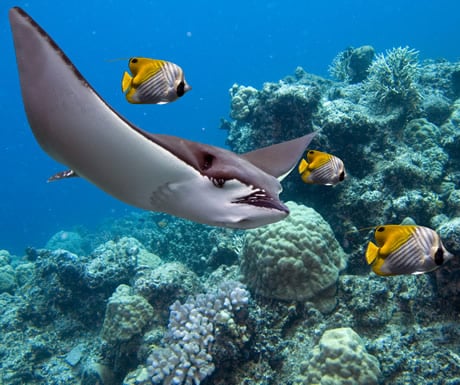 The roots of the mangroves that line the shore act as a nursery for juvenile fish as well as wiggling anemones and brittle stars, the spiny relatives of starfish. The reef is one of the largest in the world, with large elkhorn coral providing the peak environment to support a healthy lobster population. Further into the ocean is shark ray alley, a gathering point for nurse sharks and stingrays.
Underwater sculpture park, Grenada
The coral of Molinere Bay, on the southwestern tip of Grenada, has suffered from environmental damage, weakening the delicate coral structures. In an innovative attempt to regenerate the area, British sculptor Jason de Caires Taylor has worked with the local community to create an underwater sculpture park.
The roots of the mangroves that line the shore act as a nursery for juvenile fish as well as wiggling anemones and brittle stars, the spiny relatives of starfish. The reef is one of the largest in the world, with large elkhorn coral providing the peak environment to support a healthy lobster population. Further into the ocean is shark ray alley, a gathering point for nurse sharks and stingrays.
Underwater sculpture park, Grenada
The coral of Molinere Bay, on the southwestern tip of Grenada, has suffered from environmental damage, weakening the delicate coral structures. In an innovative attempt to regenerate the area, British sculptor Jason de Caires Taylor has worked with the local community to create an underwater sculpture park.
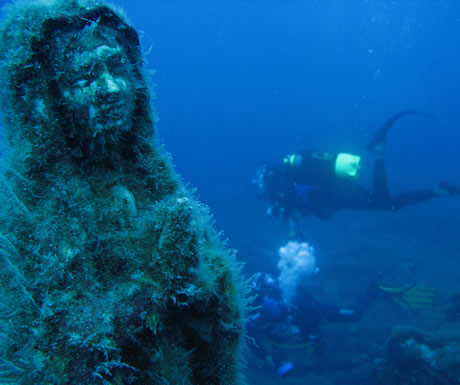 A ten-minute boat ride from the coast, you can take a guided snorkeling tour to the park, but the thrill of discovering each sculpture yourself is part of the experience. The concrete-formed figures with faces cast from local students all tell a story based on local folk tales. Swimming past them, you can see how the coral is gradually taking over in bright pinks and yellows. An eco-friendly option, snorkeling around the sculptures relieves the pressure on the fragile natural reefs left in the area as swimmers can disturb recovering coral.
El Nido, Philippines
The coral triangle, a roughly triangular area of coral in the Pacific ocean, has been nicknamed the Amazon of the seas. El Nido is located at its heart, making it home to one of the most biodiverse marine eco systems in the world. Consisting of a scattering of islands and islets, El Nido is framed with limestone cliffs and jungle. Protected against large scale fishing, the coral is impeccably healthy at the last count over 6000 species of coral were recorded.
A ten-minute boat ride from the coast, you can take a guided snorkeling tour to the park, but the thrill of discovering each sculpture yourself is part of the experience. The concrete-formed figures with faces cast from local students all tell a story based on local folk tales. Swimming past them, you can see how the coral is gradually taking over in bright pinks and yellows. An eco-friendly option, snorkeling around the sculptures relieves the pressure on the fragile natural reefs left in the area as swimmers can disturb recovering coral.
El Nido, Philippines
The coral triangle, a roughly triangular area of coral in the Pacific ocean, has been nicknamed the Amazon of the seas. El Nido is located at its heart, making it home to one of the most biodiverse marine eco systems in the world. Consisting of a scattering of islands and islets, El Nido is framed with limestone cliffs and jungle. Protected against large scale fishing, the coral is impeccably healthy at the last count over 6000 species of coral were recorded.
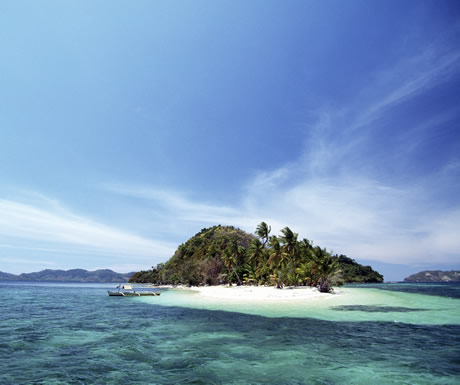 You can snorkel right off of your resorts beach or head further afield to one of the uninhabited limestone islands or lagoons. Five species of turtle, whale sharks and a host of vibrant reef fish dart around the coral. Bizarre characters to spot include the electric-blue ribbon eel who seemingly dances in the current.
Pigeon Island Marine National Park, Trincomalee, Sri Lanka
While tourism in Sri Lankas south has boomed, its still possible to find seclusion in the north. From the coastal town of Trincomalee, on the northeast coast of Sri Lanka, Pigeon Island is just in sight. A short speedboat ride will take you to this tiny, uninhabited island. Its coral-edged bay is sheltered towards the mainland so snorkeling is a gentle experience for beginners and children.
You can snorkel right off of your resorts beach or head further afield to one of the uninhabited limestone islands or lagoons. Five species of turtle, whale sharks and a host of vibrant reef fish dart around the coral. Bizarre characters to spot include the electric-blue ribbon eel who seemingly dances in the current.
Pigeon Island Marine National Park, Trincomalee, Sri Lanka
While tourism in Sri Lankas south has boomed, its still possible to find seclusion in the north. From the coastal town of Trincomalee, on the northeast coast of Sri Lanka, Pigeon Island is just in sight. A short speedboat ride will take you to this tiny, uninhabited island. Its coral-edged bay is sheltered towards the mainland so snorkeling is a gentle experience for beginners and children.
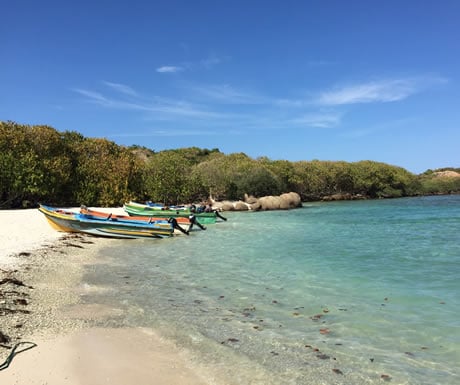 With the coral starting right from the beach, theres no need for a guide. Take lunch and you can enjoy a peaceful afternoon. A family of green turtles live on the reef, and hawksbill and olive ridley turtles have been sited regularly. Blacktip reef sharks can be seen in the shadows and a host of neon fish dart through the coral. In summer, its possible to see blue whales thrashing in the deep shelf drop out to sea.
Tobago Cays, St Vincent and the Grenadines
Off the coast of St Vincent and the Grenadines are five uninhabited sandy islands, making up Tobago Cays. A protected area, the islands are completely undisturbed, and covered in lush mangroves and white sand. Known as Grenadines Jewels in the crown, the stylish way to explore is by luxury yacht, anchoring near the snorkel sites.
With the coral starting right from the beach, theres no need for a guide. Take lunch and you can enjoy a peaceful afternoon. A family of green turtles live on the reef, and hawksbill and olive ridley turtles have been sited regularly. Blacktip reef sharks can be seen in the shadows and a host of neon fish dart through the coral. In summer, its possible to see blue whales thrashing in the deep shelf drop out to sea.
Tobago Cays, St Vincent and the Grenadines
Off the coast of St Vincent and the Grenadines are five uninhabited sandy islands, making up Tobago Cays. A protected area, the islands are completely undisturbed, and covered in lush mangroves and white sand. Known as Grenadines Jewels in the crown, the stylish way to explore is by luxury yacht, anchoring near the snorkel sites.
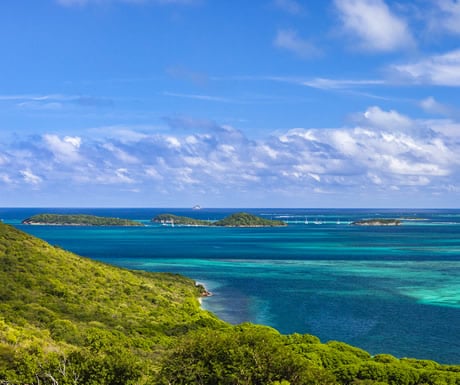 The islands lie in a shallow lagoon, well protected by a huge horseshoe of coral that creates a refuge for particularly curious green and hawksbill turtles. The shallow water and calm currents means its easy to spot the starfish, some of the largest in the world. If you manage to pull yourself away from the marine life, you might spot white zebra rhino iguanas skulking along the beach.
The Bazaruto Archipelago, Mozambique
Its possible to arrive by helicopter on the sugar-white beaches of the Bazaruto Archipelago, a collection of five sandy islands stretching out from the southern coast of Mozambique. Nicknamed “the Aquarium”, the 3 km (two mile) reef running alongside is teeming with over 100 types of vibrant coral and more than 2,000 species of tropical fish.
The islands lie in a shallow lagoon, well protected by a huge horseshoe of coral that creates a refuge for particularly curious green and hawksbill turtles. The shallow water and calm currents means its easy to spot the starfish, some of the largest in the world. If you manage to pull yourself away from the marine life, you might spot white zebra rhino iguanas skulking along the beach.
The Bazaruto Archipelago, Mozambique
Its possible to arrive by helicopter on the sugar-white beaches of the Bazaruto Archipelago, a collection of five sandy islands stretching out from the southern coast of Mozambique. Nicknamed “the Aquarium”, the 3 km (two mile) reef running alongside is teeming with over 100 types of vibrant coral and more than 2,000 species of tropical fish.
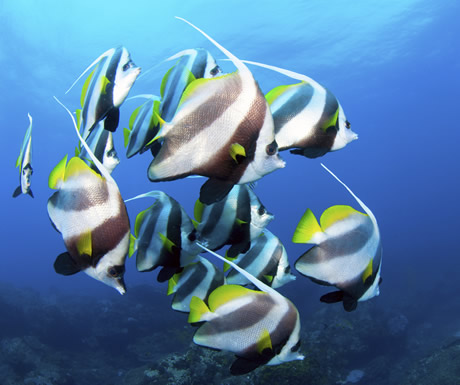 The most unusual animal to spot is the dugong. Related to the manatee, these ginormous creatures were hunted for their meat and are now an endangered species. With the shallow water a temperate 20 C (68 F), a gentle current and crystal-clear visibility, this is a comfortable snorkeling spot. Even more so if you choose to stay in one of the deluxe hotels on the archipelago.
Craig Burkinshaw is Founder of Audley Travel.
If you would like to be a guest blogger on A Luxury Travel Blog in order to raise your profile, please contact us.
The most unusual animal to spot is the dugong. Related to the manatee, these ginormous creatures were hunted for their meat and are now an endangered species. With the shallow water a temperate 20 C (68 F), a gentle current and crystal-clear visibility, this is a comfortable snorkeling spot. Even more so if you choose to stay in one of the deluxe hotels on the archipelago.
Craig Burkinshaw is Founder of Audley Travel.
If you would like to be a guest blogger on A Luxury Travel Blog in order to raise your profile, please contact us.Did you enjoy this article?
Receive similar content direct to your inbox.


Never thought of going to Belize before. I’ll have to find out more about what it’s like there. I’d definitely want to go snorkelling again – the first time I tried it I was terrified and thought I’d hate it but it was such an amazing experience, nothing else comes close. I quite like the sound of Japan as I’d like to visit there one day any way, but also the Galapagos. Been reading more about the Galapagos lately including posts on here, it makes for nice daydreams of summer holidays. Love the sound of the diverse ecology and ocean life there (will have to Google what nurse sharks are though!)
Some good spots here. My friend’s living in Indonesia at the moment working as a teacher and he’s said how beautiful it is there. He’s actually hoping to live there on a more permanent basis. Don’t blame him. Can you rent gear or would you have to buy your own to take? I’m not sure how it works, I haven’t been snorkelling before. It would be cool to get an underwater camera for it though.
Indonesia is supposed to be amazing for the beaches and clear waters. I’ve got a mate that moved there a couple of years ago after getting married. Unsurprisingly he’s rarely made it back to the UK for visits since. Can’t say I blame him. Only been snorkelling once quite a long time ago and it was good fun but I didn’t feel very confident with it. It would probably help to go in a group or get some advice from a guide about what you’re doing and where exactly to go, that kind of thing, if you’re new to it. I’ve always fancied Sri Lanka and the Galapagos so maybe one day I’ll actually get around to booking something. The photos are very, very tempting!